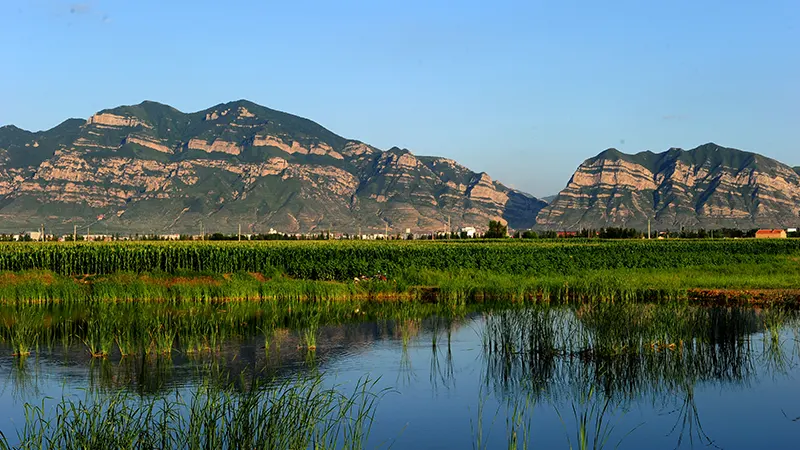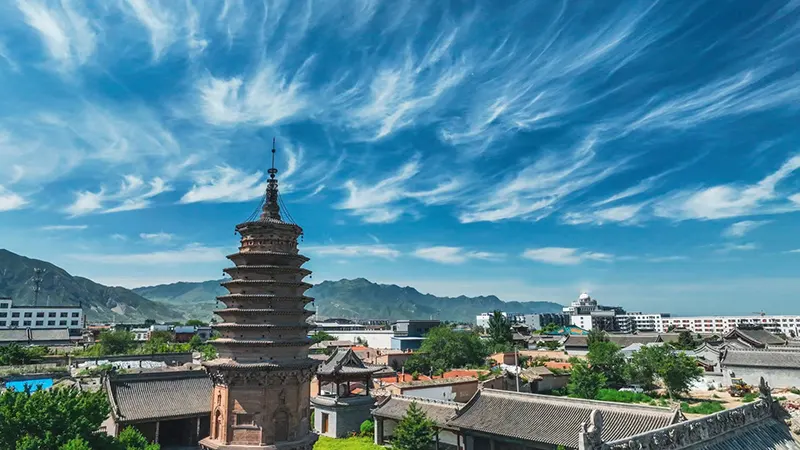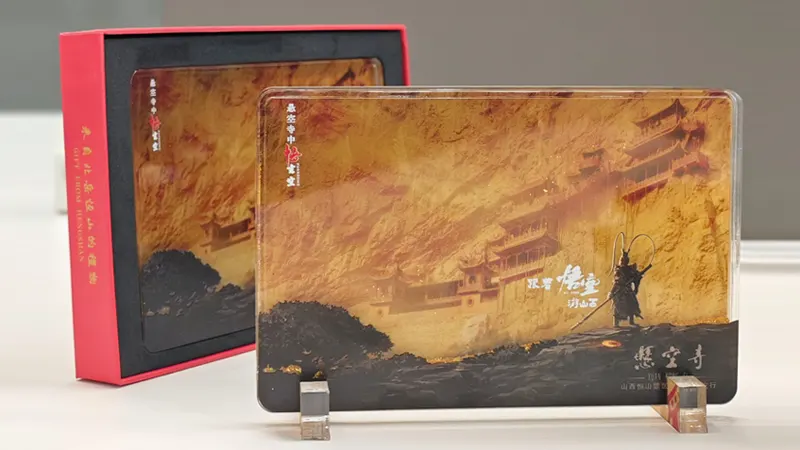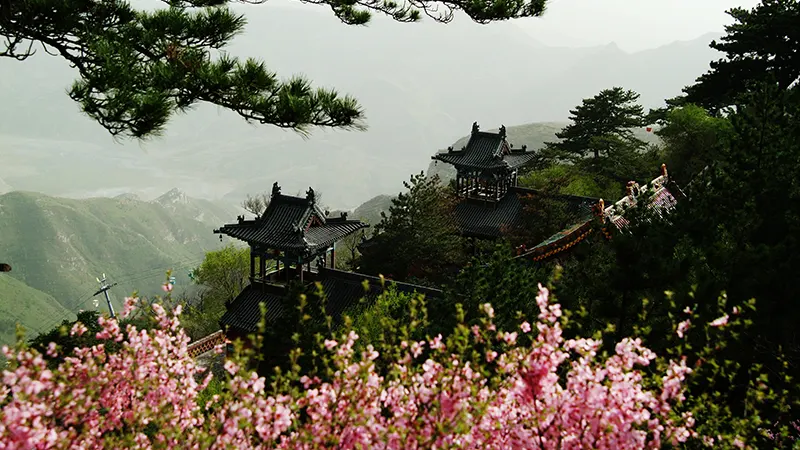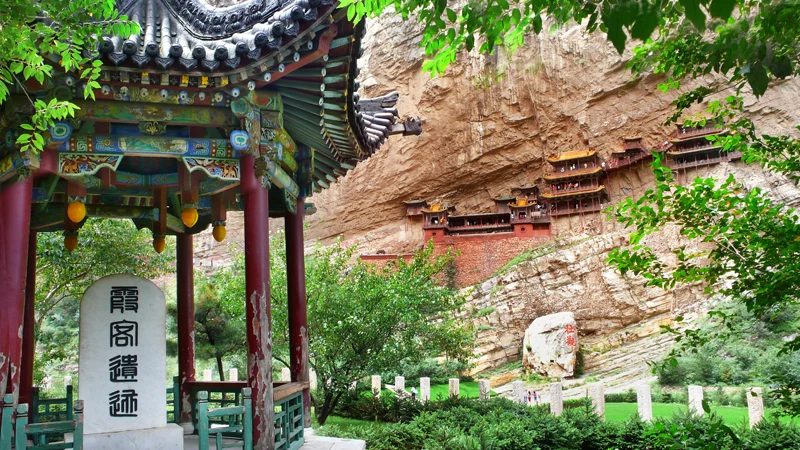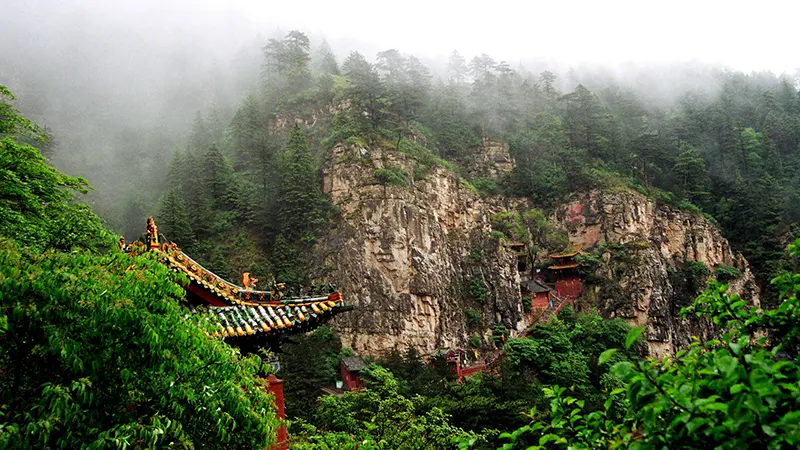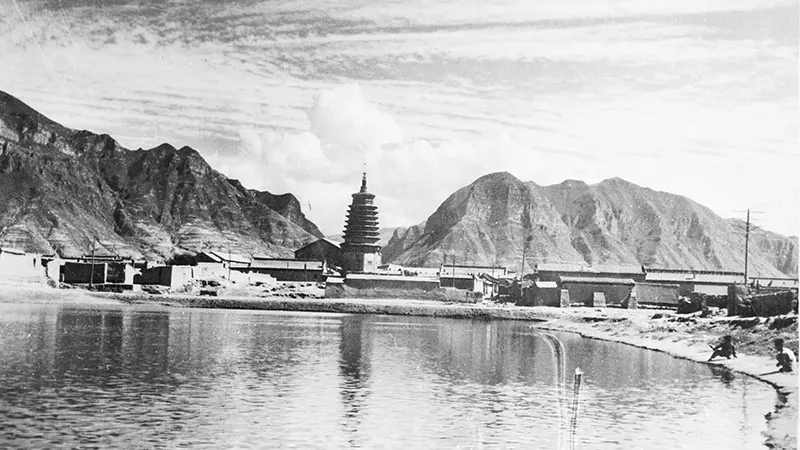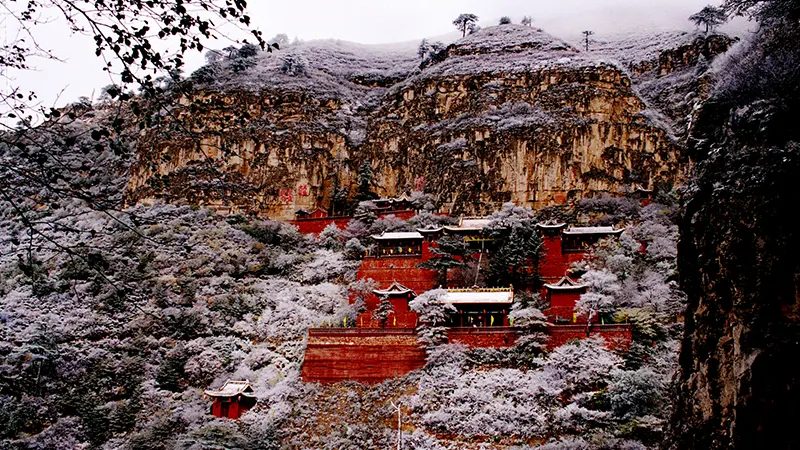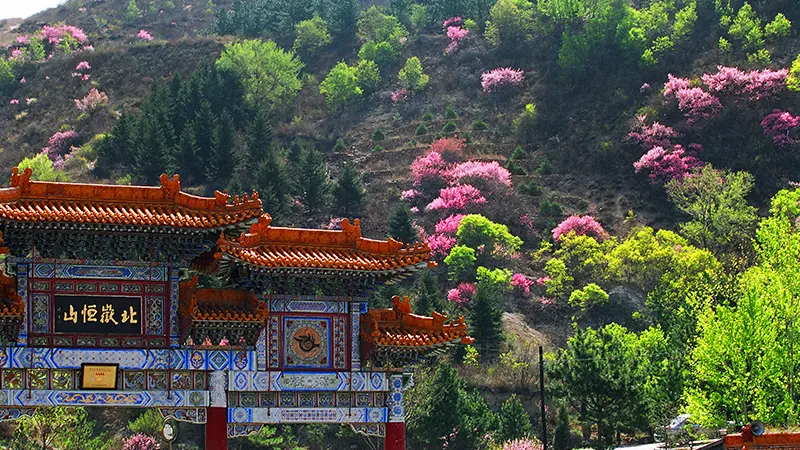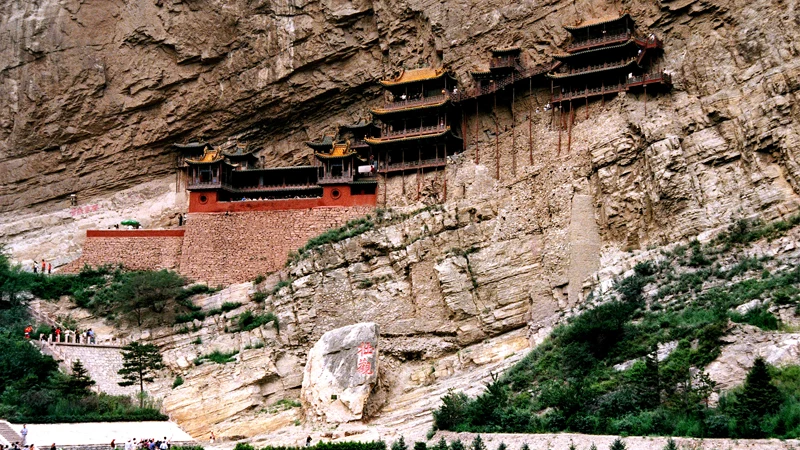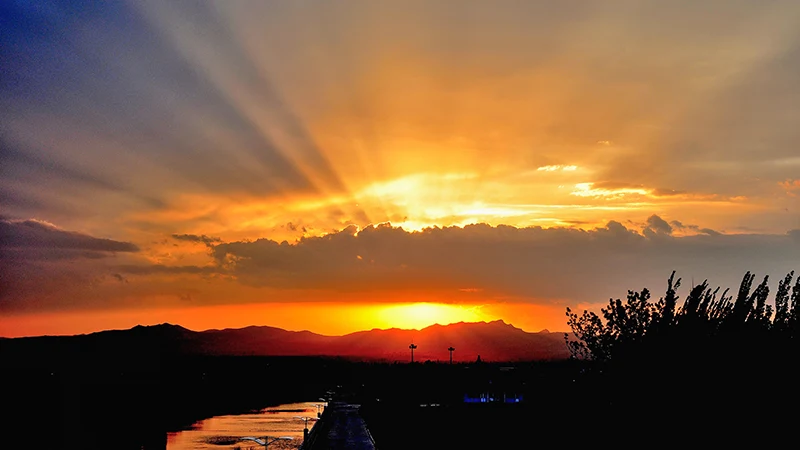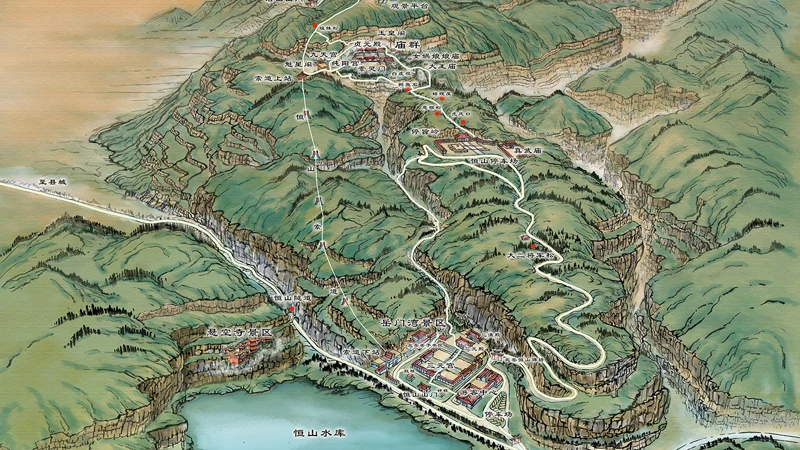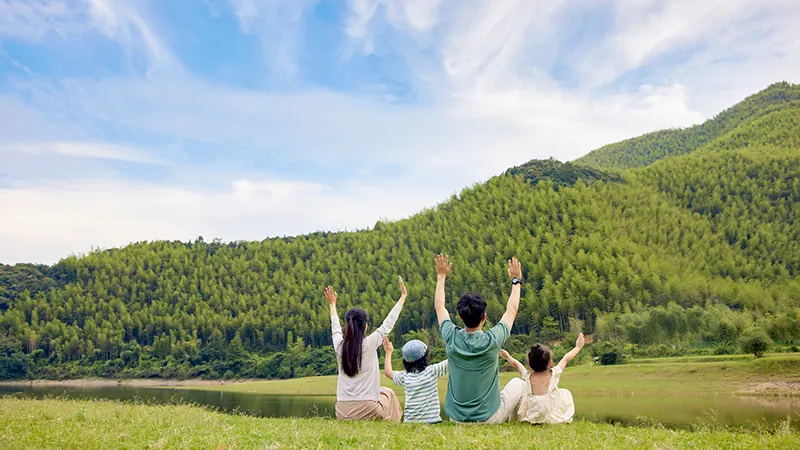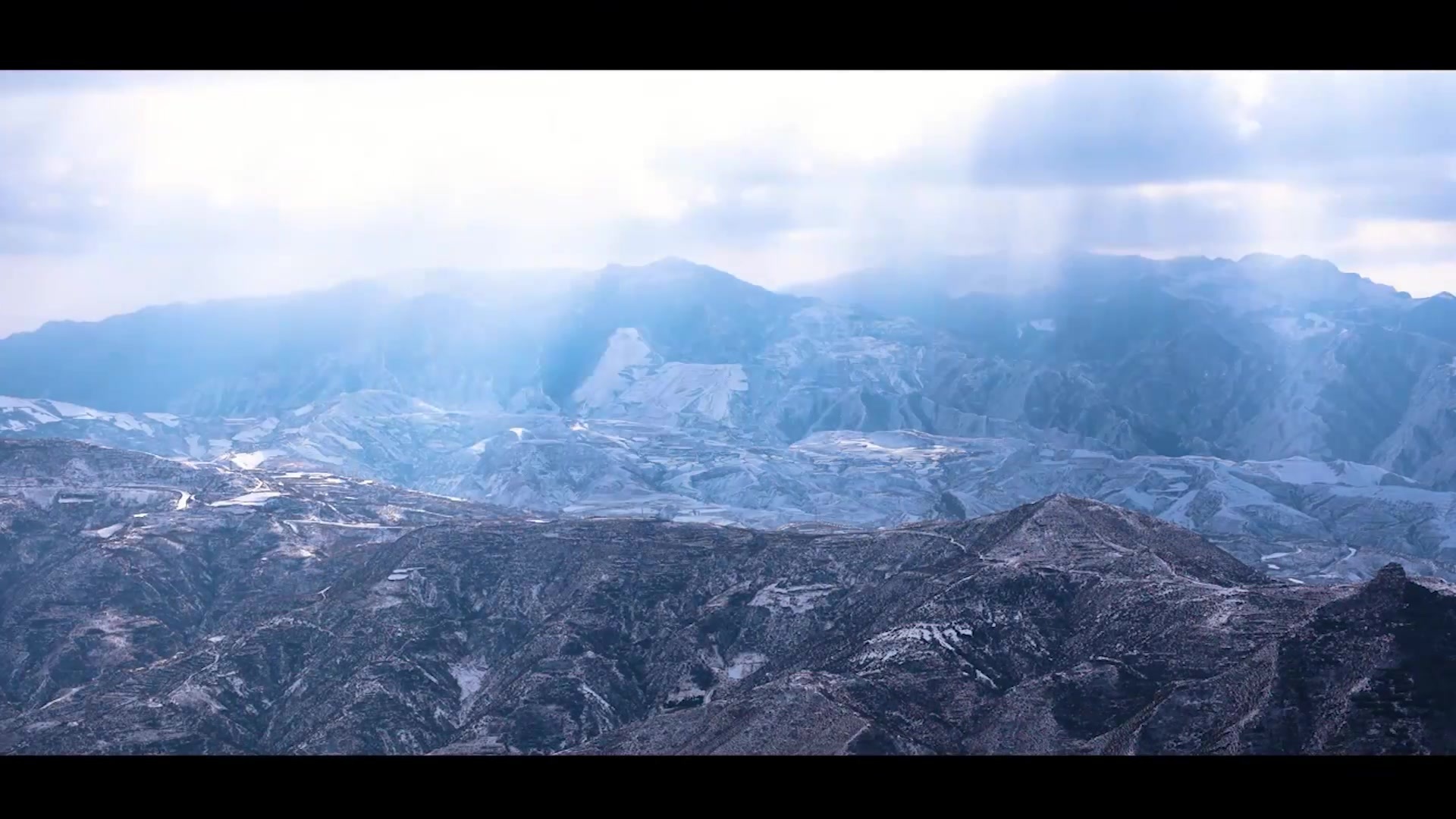The enthusiasm surrounding Black Myth: Wukong is high
Publish Time:
2025-03-14 14:27
Source:
Developed by Hangzhou Youke Interactive Technology Co., Ltd. and published by Zhejiang Publishing Group Digital Media Co., Ltd., the game "Black Myth: Wukong" has unexpectedly become a huge success. It is reported that within three days of its release, the game's sales across all platforms exceeded 10 million copies, breaking a record in Chinese gaming history.
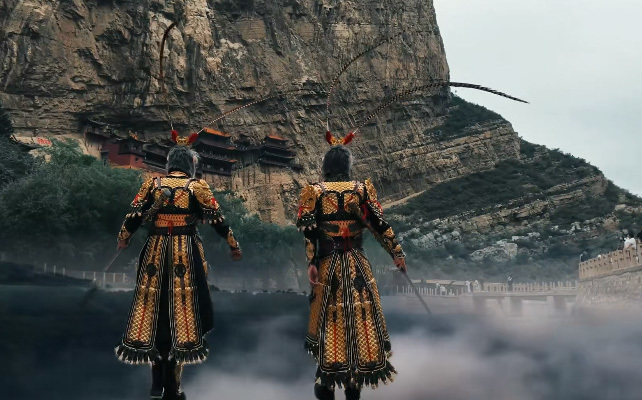
▲Wukong and the Hanging Temple
Black Myth: Wukong is a hit
Viewing the Hanging Temple
Some Thoughts on the Hanging Temple
Developed by Hangzhou Youke Interactive Technology Co., Ltd. and published by Zhejiang Publishing Group Digital Media Co., Ltd., the game "Black Myth: Wukong" has been surprisingly successful. It is said that within three days of its release, the game's sales across all platforms exceeded 10 million copies, breaking a record in Chinese gaming history. This success is a perfect match between Shanxi's cultural tourism and game science, and it also represents a mutual achievement between games and cultural tourism. According to relevant statistics, among the 36 filming locations that have become popular due to the game, Shanxi takes the lead with 27 locations attracting huge traffic, making other provinces envious! Datong City accounts for 6 of these locations, the highest proportion in the province. Hunyuan County in Datong City accounts for 2, with the Hanging Temple and Yong'an Temple trending on social media, attracting numerous tourists. Taking advantage of this wave of popularity from the Great Sage, let's explore the Hanging Temple together.

I. A Glimpse of the Hanging Temple
The Hanging Temple remains extremely popular among all the filming locations. This is not only due to "Black Myth: Wukong," but also to the enduring charm of the temple, passed down through word-of-mouth from visitors.
Originally named Xuan Kong Ge (玄空阁), also known as Chongxu Temple (崇虚寺), the Hanging Temple is located on a sheer cliff between the Tianfeng Ridge (天峰岭) and Cuiping Peak (翠屏峰) of Hengshan Mountain (恒山), 3.5 kilometers south of Hunyuan ancient city, at the mouth of the Shimenyu (石门峪) and Ciyao (磁窑) gorges. Facing northeast and sitting southwest, it is a three-story vermilion building complex supported by 90 vertical pillars of varying lengths. First built during the Taihe 15th year (491 AD) of the Northern Wei Dynasty, it has been renovated throughout the Tang, Song, Jin, Yuan, Ming, and Qing dynasties. Most of the existing wooden structures are from the Ming and Qing dynasties, with stone carvings, steles, and pagodas from various dynasties. As a royal building constructed for the realization of a celestial master's dream of becoming immortal, it is hailed, along with the Yungang Grottoes, as the "Bird's Nest" and "Water Cube" of the Northern Wei era.
The Hanging Temple has a rich cultural heritage. Built on the steep cliff on the south side of Cuiping Peak of Hengshan Mountain, the Hanging Temple bears the deep marks of the Northern Yue culture. The Jinlong Gorge (石门峪), where the Hanging Temple is located, is a famous ancient trail, anciently known as "Shiming Xing" (石铭陉). Ancient inscriptions of "Ji Zhou Bei Jie" (冀州北界) are found on the cliff walls along the trail, and it is known as the "Ciyao Tianxian" (磁窑天险), the starting point and important node of the Northern Yue Guoshan sacrificial cultural circle. Since ancient times, numerous emperors, officials, and literati have passed through this place to worship at Mount Heng, and the Hanging Temple, together with the temple groups of Hengshan Mountain, form a cultural circle that combines Northern Yue sacrifices, the concept of the five elements, and imperial sacrifices and hunting. Two of the famous eighteen scenic spots of Hengshan Mountain, "Ci Xia Yan Yu" (磁峡烟雨) and "Yun Ge Hong Qiao" (云阁虹桥), have been revered throughout the ages, with poems and songs passed down continuously. Jinlong Gorge was also an important trade route. In the ninth year of Hongwu in the Ming Dynasty, the Ciyao Kou Xun Jian Si (磁窑口巡检司) was established. By the Qing Dynasty, with the rise of commercial activities in the north, wealthy merchants came and went, maintaining its important position as a commercial thoroughfare.
Hengshan Mountain is the only national mountain among the Five Great Mountains that combines "sacrifice and military affairs". Since ancient times, Hengshan Mountain has been the boundary between agricultural and nomadic civilizations, and a battleground for military strategists and ethnic groups. The Great Wall winds its way across the northern border, dotted with forts, beacon towers, and watchtowers, presenting a magnificent and grand picture of a strategically important place. After visiting Hengshan Mountain, the great traveler Xu Xiake pointed out: "The Yi Que double peaks and the Wuyi nine bends are not comparable to it." Hengshan Mountain "can break the spine of the world." The Hanging Temple is located at the throat of the Loess Plateau leading to the North China Plain, an important node of the Northern Wei military road—the Northern Wei Straight Road. East of the Hanging Temple, near the "Yun Ge Hong Qiao" (云阁虹桥) site, two peaks face each other, standing like a gate, the narrowest point being less than 10 meters, making the terrain extremely dangerous. A poem praises: "High on the stone wall, two pavilions hang, standing alone on the dangerous peak, reaching the ninth heaven." The iron chain suspension bridge of the Hanging Temple was originally a tall gatehouse in ancient times, with the roaring Hun River flowing beneath it, making it truly a place where one man could guard against ten thousand. Li Mu of the Zhao State, Meng Tian of the Qin Dynasty, Wei Qing, Huo Qubing, and Li Guang of the Han Dynasty used this place to campaign against the Xiongnu; Wei Chi Gong and Xue Rengui of the Tang Dynasty defended against the Turks and Uighurs; Yang Jiajiang, Zhe Jiajiang, and Yue Jiajiang of the Song Dynasty repeatedly defeated the Khitan and Jurchen; Xu Da and Chang Yuchun of the Ming Dynasty fought against the Mongolian army, etc. The Hanging Temple stood quietly on the cliff, compassionately overlooking batches of generals leading thousands of troops passing through the gorge for over 1500 years. Du Fu has a poem: "The military drums cut off the traveler's journey, the autumn wind carries the sound of a single wild goose. The dew turns white from tonight, the moon is bright in my hometown. My brothers are all scattered, no home to ask about life or death. Letters never reach, let alone the war is not over." Was the Hanging Temple built here also to comfort the soldiers who fought far from home and to transcend the souls of those who died in battle?

▲A large cliff inscription of "Hengzong" (恒宗) written by Zhang Sheng (张升), a Ming Dynasty magistrate of Datong and calligrapher
The perfect fusion of religious and national cultures has become the cultural core of the Hanging Temple's enduring popularity. Hanging Temple is not merely a Daoist pavilion. As times changed, successive emperors either 'promoted Daoism and suppressed Buddhism' or 'promoted Buddhism and suppressed Daoism,' and folk beliefs constantly shifted. However, the Hanging Temple gradually evolved into a temple integrating Confucianism, Buddhism, and Daoism, becoming a typical representative of the Chinese 'harmony' culture. It also fostered the personality traits of people from Hunyuan—tolerant, honest, kind, and helpful. Hengshan Mountain is the birthplace of the Quanzhen School of Daoism. Wang Chongyang, the founder of Quanzhen School, advocated 'the unification of three religions,' saying, "Confucianism, Buddhism, and Daoism are interconnected; the three religions have always stemmed from one origin." On the top floor of the Hanging Temple, there is a Three Religions Hall where one can appreciate the cultural wonder of 'the unification of three religions.' In the Three Religions Hall, Confucius, Sakyamuni, and Laozi, the three founders of religions, are enshrined together. Buddhism emphasizes compassion and saving all beings; Confucianism emphasizes harmony and benevolence; and Daoism takes emptiness as its root and follows nature. The three religions, while different, complement and coexist peacefully, fully reflecting the broad-mindedness and magnificent bearing of Hengshan Mountain culture in absorbing various cultures. The cultural feature of the unification of three religions avoided mutual destruction among believers of different religions, resulting in harmonious coexistence, equality, and joint worship among believers of different religions, creating a multicultural and peaceful atmosphere of "religious integration and global harmony." This has enabled the architectural marvel to remain well-preserved for a thousand years. The eastward layout of the Hanging Temple reflects the cultural characteristics of the Northern Wei Xianbei people's worship of the sun totem, which complements the cultural characteristics of the Han people's statues and stone carvings in the temple. The integration of national cultures has added splendor to the Hanging Temple. Since the founding of the People's Republic of China, the Hanging Temple, known for its 'wonder, ingenuity, and suspension,' has been a prominent representative of ancient cliff architecture, the unique religious culture of 'the unification of three religions,' a typical representative of the national art treasure house, and a typical representative of national cultural integration. It has been favored by tourists and scholars from all over the world, and its protection efforts are unprecedented.
The Hanging Temple embodies superb architectural art. The Hanging Temple covers an area of 472 square meters, with a land area of only 152.5 square meters. It is said that it was originally more than 90 meters high from the ground. Due to years of river siltation, the temple is still 58 meters above the ground, making it one of the world's rare ancient cliff buildings, known as the 'sky pavilion' and 'the first sight of Hengshan Mountain.' The entire temple consists of three groups of pavilions, with 20 large and small halls and more than 40 rooms, enshrining 79 statues of various materials, including copper casting, iron casting, stone carving, and clay sculpture; 14 pieces of gold and stone relics (9 steles, 4 tablets, and 1 Buddhist pagoda); 13 stone carvings; 2 plaques; the Northern Wei plank road; Yun Ge Hongqiao ruins and relics stretching 133 meters. The architectural art of the Hanging Temple is extremely exquisite, and it is a historical and cultural heritage that combines the outstanding temple construction creations of ancient people with a unique natural landscape environment. From afar, the Hanging Temple looks like a delicate wooden carving embedded in the towering cliffs. Up close, the roof is arched, the eaves are high and pointed, and the pillars are precariously positioned, resembling a dragon flying from a cliff, seeming to fly into the sky. Li Bai, a great Tang Dynasty poet, visited the Hanging Temple and exclaimed, 'Magnificent!', and composed a poem, 'Night Stay in a Mountain Temple': "A tall building of a hundred feet, I can pick the stars. I dare not speak loudly for fear of frightening the heavenly people." Li Bai vividly portrays the wonder of the Hanging Temple through this poem.
The location of the Hanging Temple is carefully chosen. The Shimenyu section where the Hanging Temple is located is surrounded by Tianfengling and Cuiping Mountain on both sides, with the Hun River winding its way through. Viewed from the air, it resembles a Tai Chi diagram, with the Hanging Temple located at the position of the yin and yang fish in the Tai Chi diagram, showing the profound connotation of Tai Chi giving birth to two instruments. The Cuiping Peak cliff on which the Hanging Temple hangs is composed of Ordovician limestone, which is quite hard and resistant to weathering, laying a solid foundation for the Hanging Temple. The cliff where the Hanging Temple is located is a concave arc, like a huge umbrella, not only protecting the Hanging Temple from rain, but also forming a unique scenic view of mist and rain, misty peaks, and rain droplets flying backward. The Cuiping Peak cliff and the Tianfengling peaks on the opposite side form a valley that blocks sunlight. Even during the summer solstice, the longest day of the year, the sun does not shine for more than three hours. When the sun shines directly, it does not reach the Hanging Temple, so the Hanging Temple is not exposed to strong sunlight. The Jinlong Canyon is winding and undulating, with concave cliffs enveloping it. While strong winds rage outside, the inside of the temple is dust-free. The Hanging Temple is thus protected from strong winds. A pit is built on top of the cliff where the temple is located to collect rainwater and boulders. Occasionally, rocks may roll down from the mountaintop, but they fall into the ditch in a parabolic shape, leaving the temple unharmed. The Hanging Temple is more than 90 meters above the ground, and even now, it remains 58 meters high, making it unreachable by Hun River floods. No wonder a Qing Dynasty architect exclaimed: "A unique wonder, its magnificence will last for thousands of years. Why? Because the temple is located in a cliff recess, shielded from wind and rain, and protected from rolling rocks—it's wisdom!" More magically, from late October to mid-November, a cursive "Buddha" character, about three stories high and two rooms wide, appears on the cliff wall above the Three Religions Hall of the Hanging Temple, formed by light and shadow, with a bold and powerful brushstroke and elegant and ethereal characters. This light and shadow wonder only appears at a specific time, location, and light. The best observation time is 11 o'clock noon during this period, with the condition being a clear sky and good illumination, lasting about 20 minutes. Even more mysterious is a cliff inscription about 40 meters south of the Hanging Temple's gate, with four large characters inscribed, "Buddha Seen in the Air," covering approximately 4 square meters. Due to long-term weathering, the exact age of the inscription is untraceable. In April 2014, Princess Sirindhorn of Thailand, a Buddhist, visited the Hanging Temple. At that time, the "Buddha Seen in the Air" wonder did not appear. However, as the princess got off the car and looked from afar at the Hanging Temple, she was instantly struck by this unique wonder and spontaneously exclaimed, "Buddha Appears in the Air!" The immediate agreement between ancient and modern, Chinese and foreign, makes one wonder whether it was intentionally created by ancient craftsmen or a natural phenomenon.

▲The Hanging Temple Guanlou in the Shunzhi Edition of "Hengyue Zhi"
The Hanging Temple has a unique and ingenious structure. Xuan Kong Temple continues the construction techniques of "Gongshu Tianqiao" and is a rare and precious example of a partially suspended cliff-side wooden structure built on a cliff in China. The entire building complex extends upwards from a slightly lower point on the southern cliff, with all the halls and pavilions connected yet distinct, symmetrical yet varied. Caves are within buildings, buildings within corridors, and corridors concealing caves; they are staggered, echo one another, wind and turn, are layered and well-proportioned, with compact layouts and distinct layers, generating a sense of both reality and illusion, showcasing great diversity. The combination of forms and the contrast of spaces achieve an orderly artistic effect. The construction of Xuan Kong Temple relies on ingenious and profound principles of mechanics. It uses half-inserted horizontal beams as a foundation, cleverly borrowing the support of the rocks; the beams and pillars are integrated vertically, while the corridors and railings are closely connected laterally. These 27 wooden horizontal beams, each around 50 centimeters in diameter, are made of high-quality fir wood from the local area. They were previously soaked in tung oil to prevent insect damage and decay. In addition, the horizontal beams are processed into a scissor shape, with most of them obliquely inserted into the rocks. The exposed part is about one meter long, and the entire base of the building rests directly on the horizontal beams. When the horizontal beams are hammered in, the wooden wedges previously inserted will penetrate the horizontal beams. The greater the external force, the tighter the internal interlocking, similar to modern expansion bolts. Therefore, the fixed horizontal beams transfer the load pressure to the rocks, greatly reducing the pressure on the horizontal beams. As for the 30 vertical pillars, each tens of meters long and tens of centimeters in diameter, they are divided into three groups, precisely calculated and ingeniously placed under two buildings and a walkway. When there are more tourists, they can play a role of "supporting thousands of catties with wooden pillars", while with fewer visitors they serve decorative purposes and enhance the sense of danger. A local folk song says, "Xuan Kong Temple, halfway to the sky, suspended by three horsetails." The "horsetails" refer to these red wooden pillars that connect the buildings and walkways above and extend to the protruding rocks below. In addition, the traditional mortise-and-tenon joints interlock without separation, also avoiding the dangers of wind and earthquakes. Historically, the Hengshan Mountain area has experienced several earthquakes. During the 1989 "Dayang" earthquake (magnitude 6.1), many houses in the city and countryside collapsed or cracked, but the main structure of Xuan Kong Temple remained unaffected.
Xuan Kong Temple houses many rare treasures. The cultural relics in Xuan Kong Temple are of extremely high value. There are 79 statues of various kinds, including copper, iron, stone carvings, and clay sculptures. Among them, the three Detached-thread Buddha statues enshrined in the Three Buddha Hall are Tang Dynasty craftsmanship from the Ming Dynasty, using superb Detached-thread sculpting techniques. Early Detached-thread Buddha statues in China are mostly lost overseas. Currently, the Metropolitan Museum of Art and the Seattle Art Museum in the United States each house Tang Dynasty Detached-thread Buddha statues. The statue of Monk Jianzhen in the Todai-ji Temple in Nara, Japan, is also a Detached-thread Buddha statue. Monk Jianzhen passed on the sculpting techniques from China, and the Japanese commonly call this Detached-thread crafting method "Kan-shi", leading some in Europe and America to only know "Kan-shi" and not the Chinese name "Jia-xun Tuo-tai", or Detached-thread sculpting. The three Tang Dynasty Detached-thread Buddha statues enshrined in the Three Buddha Hall of Xuan Kong Temple are exquisite, solemn, and compassionate, weighing only 2.5 kilograms, showcasing superb craftsmanship and making them rare treasures.
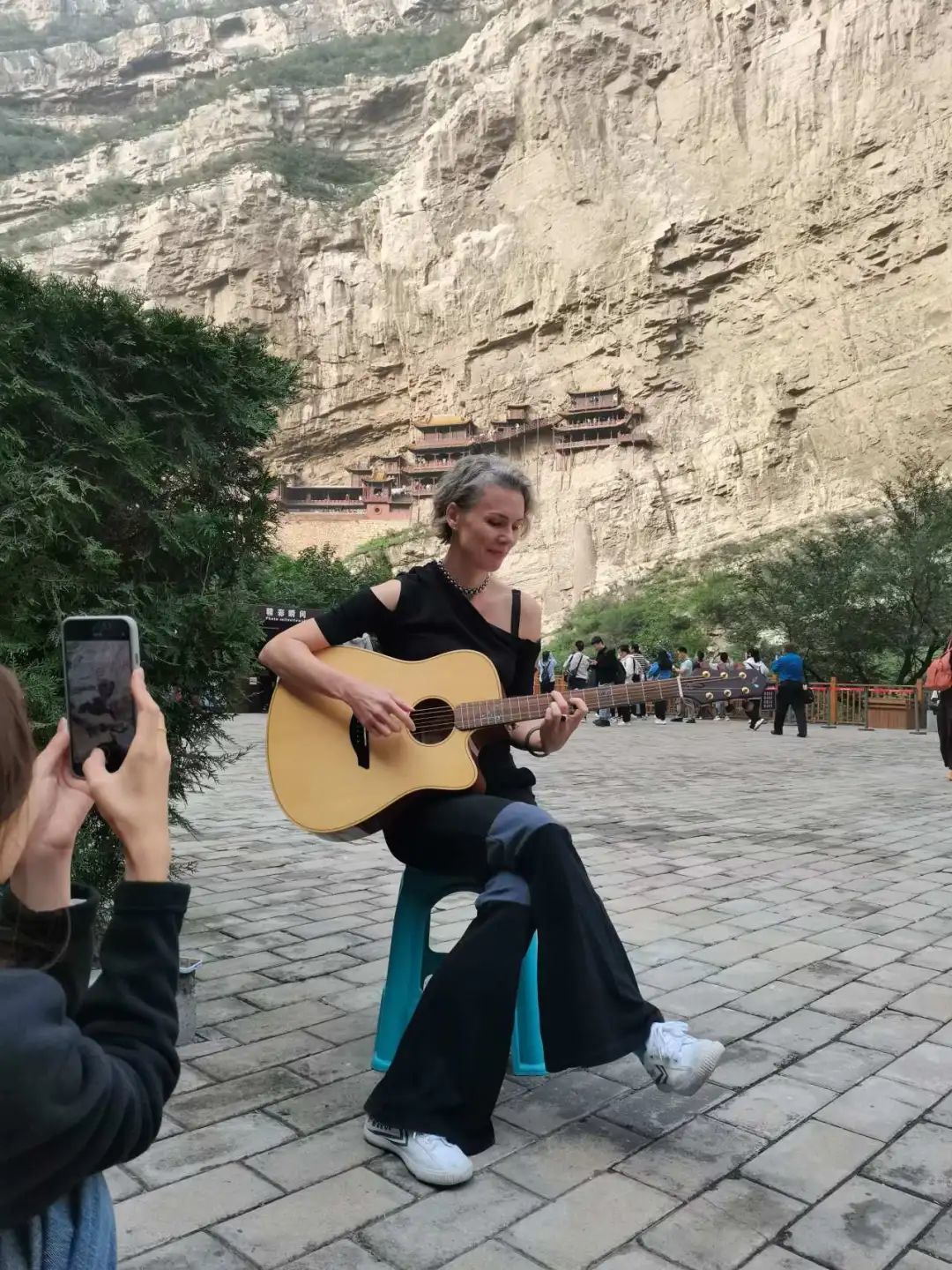
▲ Canadian famous musician Ziyu playing and singing happily under Xuan Kong Temple
In addition, the Tuanlong Peony Screen in the Three Officials Hall, made of grass and mud, features vibrant peony flowers and vivid coiled dragons. It has been praised by the World Architects' Conference as a world artistic treasure. The stone-carved Buddha statues of the Law, Reward, and Transformation in the Xuan Kong Temple walkway caves are from the Northern Wei Dynasty. They are magnificent and grand, comparable to the Yungang Grottoes in Datong, and are known as "Little Yungang". The clay sculptures of Sakyamuni, Weituo, Heavenly Maiden, and Ananda in the Three Saints Hall are well-proportioned, plump, and have various expressions. Professor Luo Gongliu, a famous painter, praised them, saying, "The clay sculptures in the Three Saints Hall have a Tang Dynasty style and are the finest of Xuan Kong Temple's clay sculptures." Xuan Kong Temple has numerous and exquisite inscriptions. The earliest stone carvings in Xuan Kong Temple are from the Northern Wei Dynasty. Existing fragments of Northern Wei stone carvings have received high praise from cultural relic experts, serving as strong evidence that Xuan Kong Temple was built in the Northern Wei Dynasty. Xuan Kong Temple currently preserves 14 pieces of gold and stone cultural relics (9 steles, 4 stone tablets, and 1 pagoda) and 13 stone carvings. On the cliff wall next to the bell tower corridor, there is an embedded stele inscribed with the poem "Early Passing Xuan Kong Temple", written by Zheng Luo, Minister of War in the Ming Dynasty. Below the four large characters "Gongshu Tianqiao" carved in a cave in the temple, there is an embedded stele from the 16th year of the Dading period (1176) of the Jin Dynasty, commemorating the restoration of Xuan Kong Temple. On the riverbed outside the temple, there is a large stone inscribed with the four characters "Yunbian Jiaoan", written by Sun Gongliang, an Inspector-General and Minister of Works from Hunyuan during the Yuan Dynasty. These characters are ancient, solemn, elegant, and are considered masterpieces of calligraphy. Stone carvings and steles with inscriptions like "Amazing Sight", written by Chen Fei, the Governor of Gansu during the Ming Dynasty, are like entering a treasure trove of ancient stone carving art, truly breathtaking.
Dong Xuedeng, a Jinshi scholar during the Jiajing reign of the Ming Dynasty and former governor of Xuan (Xuanhua) and Da (Datong), after leaving Xuan Kong Temple, wrote a poem: "One night in Xuan Kong Temple, forgetting all worldly matters. The bed is high, and human figures are distant. Mountains are quiet, and the sound of water cries. The bright lamp illuminates the mind, and the clear bell washes away the dust. The Zen hall's dreams are peaceful. When will I be free from official duties?" Tourists who have visited Xuan Kong Temple often, like Dong Xuedeng, are reluctant to leave and wish to stay quietly in the temple, listening to the murmuring Hun River, smelling the fragrance of incense, watching the misty scenery of the Magi Gorge, perhaps experiencing a sudden opening of their minds, shedding worldly concerns, letting go of fame and fortune, willingly accompanying a few immortals and avoiding the chaos of the world.
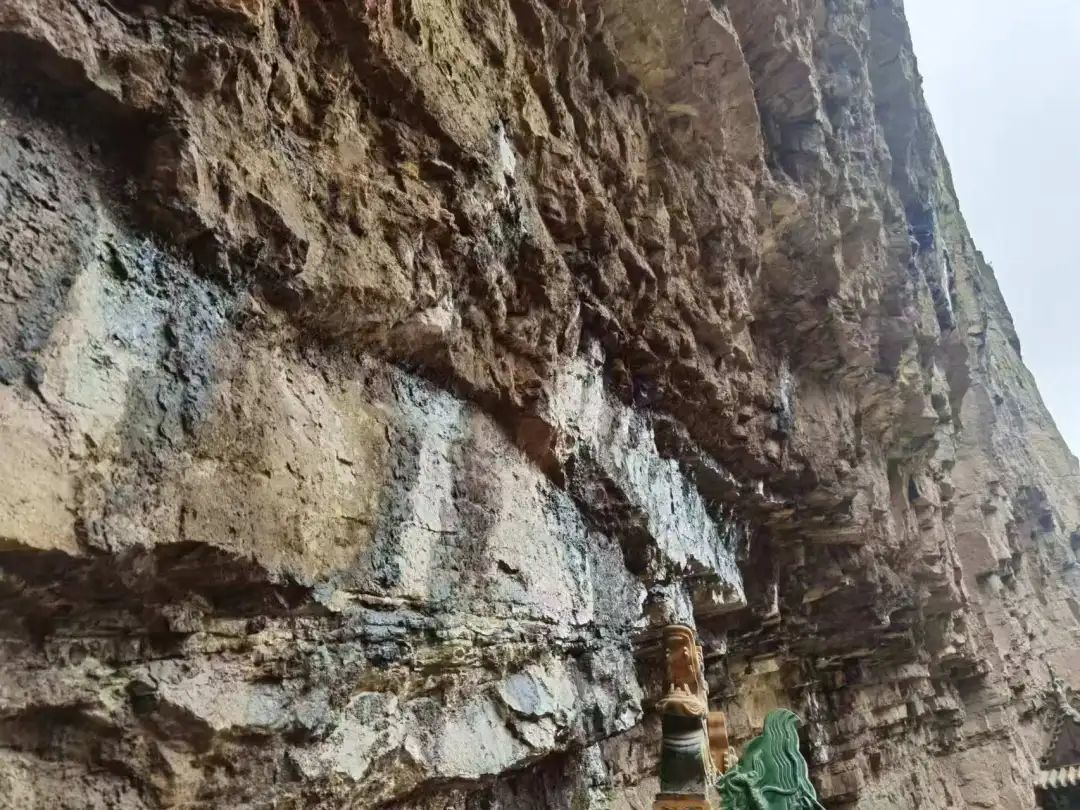
▲ Seriously water-damaged rock mass above Xuan Kong Temple
II. Both Joy and Worry about Xuan Kong
The great poet Li Bai once lamented, "Those who abandon me, the days of yesterday cannot be retained." and "Those who trouble my heart, the days of today bring much worry." Since the game "Black Myth: Wukong" unexpectedly became a big hit, Hunyuan County has mobilized the entire county to upgrade its service facilities and levels, attempting to welcome this wave of traffic with the greatest enthusiasm and best service, related to the Oriental fantasy world and heroic epics. However, based on my understanding of this suspended wonder, while rejoicing at the overwhelming traffic brought by Xuan Kong Temple, a deep-seated concern about the unbearable weight continues to linger in my mind.
Although Xuan Kong Temple is a brilliant pearl of ancient Chinese architectural art, it is, after all, like a person who has lived through more than ten centuries, weathered over 1,500 years of wind and rain, experienced hardship, borne heavy burdens, and is scarred.
Hanging Temple, located on Hengshan Mountain, sits within the Shanxi seismic zone, an area historically prone to frequent earthquakes. In the last 50 years, three earthquakes of magnitude 6 or greater have occurred. On October 18, 1989, a moderate-strong earthquake swarm struck Datong-Yanggao. Multiple earthquakes exceeding magnitude 5 occurred, with the main shock registering 6.1. Datong, Yanggao, Hunyuan, and Guangling counties, along with Yangyuan County in Hebei Province and Fengzhen County in Inner Mongolia, suffered varying degrees of damage. The earthquake resulted in 19 deaths, 193 injuries, and the loss of 1957 livestock. Due to the prevalence of houses constructed from loess, the damage was most severe, with tens of thousands of houses collapsing; in severely affected areas, over 80% of homes were destroyed. In March 1991, a 5.8 magnitude earthquake struck the border region of Yanggao County and Datong County in Datong City. On September 2, 2008, at 3:06:11 PM, a M3.5 earthquake occurred in Yingxian County's Dahuangwei Township, west of Hunyuan County, where the Hanging Temple is located; the tremor was felt by some residents in Datong City. On May 19, 2024, a 3.9 magnitude earthquake struck Yanggao County, north of Hunyuan County, where the Hanging Temple is located, with a focal depth of 13 kilometers. While the Hanging Temple remained intact in these earthquakes, these external forces still caused varying degrees of impact and minor damage to this structure built into the cliffside. Not to mention the countless smaller earthquakes that Hunyuan County has experienced over the past millennium.
Hengshan Mountain has historically been a strategically important location, dotted with numerous forts and watchtowers. The conflicts between Han and other ethnic groups, and among various minority groups themselves, were not always resolved peacefully; armed conflicts were more common. Over 1500 years, the Hanging Temple has inevitably suffered from the ravages of war. Whether accidental damage during battles or deliberate destruction, the scars remain.

▲Water seepage into the rock formation has already affected the safety of the Hanging Temple sculptures.
The Hanging Temple is situated deep within the Ciliao Gorge of Hengshan Mountain, nestled between steep, sharply cut limestone cliffs. A stream, the Hun River, flows through the gorge, and the pristine natural landscape is well-preserved. However, limestone is prone to erosion and weathering, especially from acid rain, and the Hanging Temple is built into a cliff face formed from Ordovician limestone. Years of erosion, particularly during rainy seasons, have caused local weathering, rock fracturing, water seepage, and other unfavorable geological phenomena. According to expert surveys conducted in 2022, there are 10 main unstable rock formations within the Hanging Temple’s cultural protection zone. These are located: 2 in the southern section of Cuiping Peak, 3 in the northern section near the first parking lot, 4 in the southern section of Tianfeng Ridge, and 1 in the northern section. In recent years, large-scale collapses have occurred on the opposite mountainside, and small rock fragments have fallen from the cliff around the Hanging Temple, occasionally injuring people. Recently, staff discovered that the rock face above the Daxiong Baodian (Main Hall) continues to leak after rain, raising concerns about the risk of a collapse. The question arises: if the foundation fails, what will become of the structure itself?
In the past, the Hanging Temple was a simple temple, attracting only a few thousand visitors annually. However, since becoming a tourist attraction, with improvements in the tourism industry and increased promotional efforts by provincial, municipal, and county tourism authorities, the Hanging Temple's fame and reputation have grown significantly, resulting in a year-on-year increase in both domestic and international tourists. Especially in the two years since the pandemic, visitor numbers have often reached capacity. This increased influx of visitors has put a strain on the wooden structure of the Hanging Temple, causing wear and tear on staircases, railings, pillars, and other wooden components. To aid in preservation, the instantaneous suitable capacity for entering the Hanging Temple is 170 people, the maximum capacity is 250 people, and the maximum daily carrying capacity is 3260 people. According to official statistics, the number of visitors to the Hanging Temple was: 585,000 in 2021, 252,900 in 2022, and 718,000 in 2023. Given the popularity of "Black Myth: Wukong," visitor numbers in 2024 are expected to increase further. With visitor numbers far exceeding the maximum capacity, tickets are in high demand, leading to scalping. Even those who obtain tickets often face long queues, leading to dissatisfaction with the quality of service and the environment. This dissatisfaction is amplified by adverse weather conditions. To address issues such as traffic congestion and inadequate visitor services, the Hunyuan County Party Committee, the county government, and the Hengshan Mountain scenic area management department have invested 517 million yuan in improving the scenic area's infrastructure, building a new Hengshan Mountain visitor center, adding two toilets within the Hanging Temple scenic area, constructing new walkways with protective canopies, upgrading the ticketing system, inviting experts for onsite inspections, and undertaking a significant amount of effective work. To facilitate visitor access, the scenic area extends opening hours by an hour and a half during the peak summer season. The dedicated staff arrive at 6 am and often work until 9 pm or later, working tirelessly to serve visitors. Despite these efforts, the combination of visitor limits, weather conditions, and queues has led to a surge in complaints about the Hanging Temple scenic area, both online and offline.
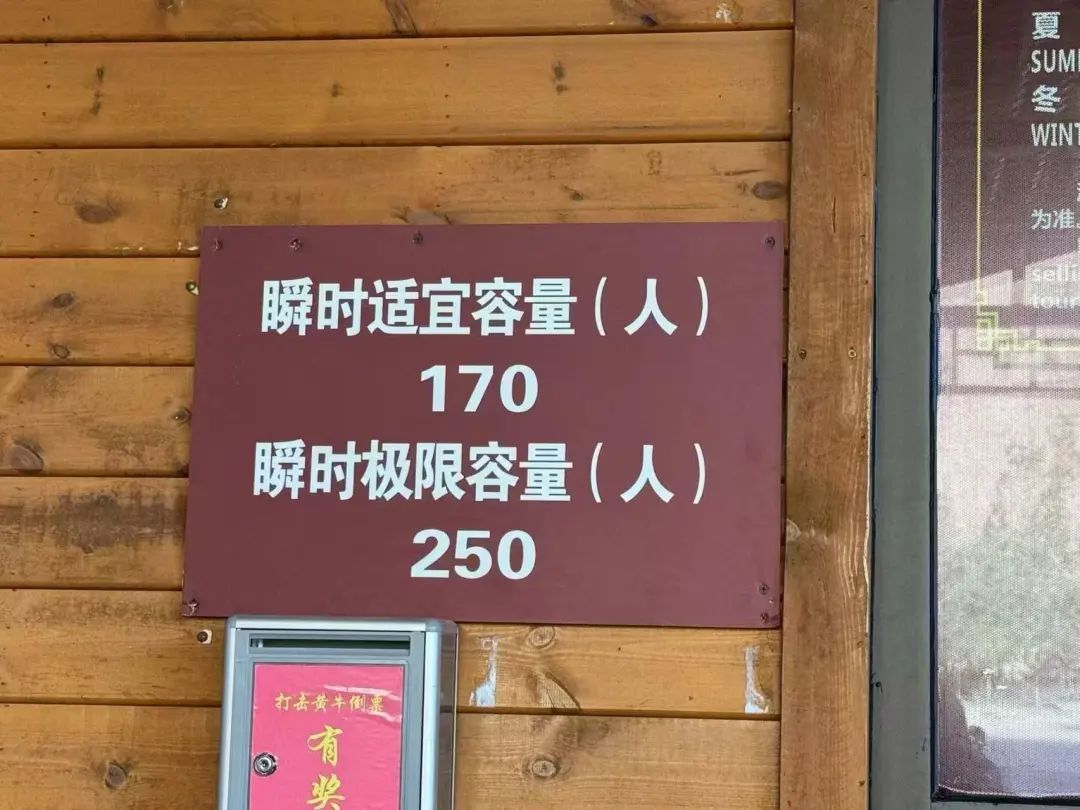
▲Hanging Temple visitor capacity sign
III. Several Suggestions on the Protection and Utilization of the Hanging Temple
In the face of insurmountable challenges in balancing cultural preservation with the increasing number of complaints, this author has conducted surveys among visitors, experts, and relevant departments, resulting in the following suggestions:
1. Construct a digital experience center for the Hanging Temple within the Golden Dragon Gorge to alleviate pressure on the temple itself by providing an alternative way for visitors to experience the temple and its history. This would effectively reduce the number of visitors entering the main temple.
2. Significantly increase the Price of Hanging Temple entrance tickets to control visitor numbers.
3. Construct a sightseeing elevator at the corner of the Xuanwu Lake dam, connecting the Hanging Temple and the Xuanwu Lake (Hengshan Mountain Reservoir) at Cixiaikou. This would offer a complete view of two of the ancient eighteen scenes of Hengshan Mountain, "Cixia Smoke and Rain" and "Cloud Pavilion Rainbow Bridge," while simultaneously diverting visitors from the Hanging Temple to Xuanwu Lake.
4. Implement an intermittent rest period for the Hanging Temple, temporarily closing the scenic area to conduct inspections and maintenance of both the temple itself and the surrounding rock formations. This would reduce the stress on the structure.
5. Organize a team of experts and professional ancient building restoration personnel to conduct phased repairs of the Hanging Temple.
6. Add a night tour to the Hanging Temple to extend the hours for visiting, expand the tour area, enrich the tourism offerings, and provide a more substantial economic foundation for the preservation and utilization of the Hanging Temple.
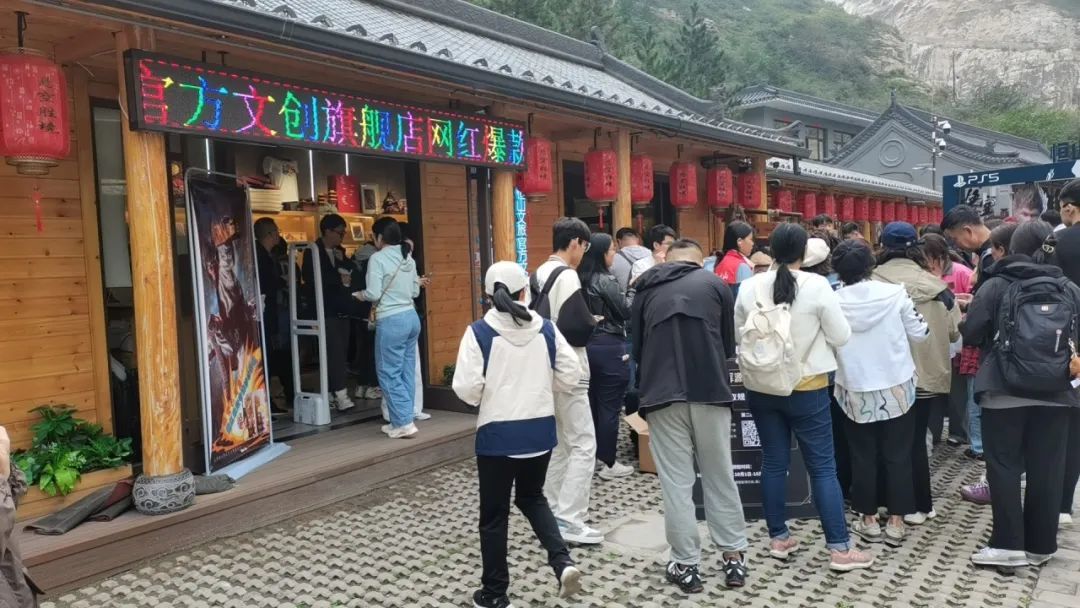
▲Scene of the popular sale of Hanging Temple Black Myth: Wukong refrigerator magnets
Standing on the banks of the Hun River, gazing at the Hanging Temple on the cliff face of Cui Ping Peak, a structure resembling a golden dragon in flight, I feel a mix of hesitation, admiration, gratitude, and worry. I marvel at the ingenuity of the ancients, express gratitude for the hard work of the tourism frontline staff and the understanding of numerous tourists, and worry about the waves of explosive tourism popularity that are unlike anything seen before. The influx brings not only increased income and the joy of cultural heritage, but also restless thoughts and musings about hoping for the Hanging Temple's healthy journey through the years!
Life's meaning lies in its spirit, and who cares about fame and fortune? As tourism professionals, they are undeterred by hardship, consistently persevering in their efforts, driven by loyalty to their work and a conscientious responsibility to protect the Hanging Temple, this world treasure of art, from further ruin and decay!
September 2024, written in Yu Zhai
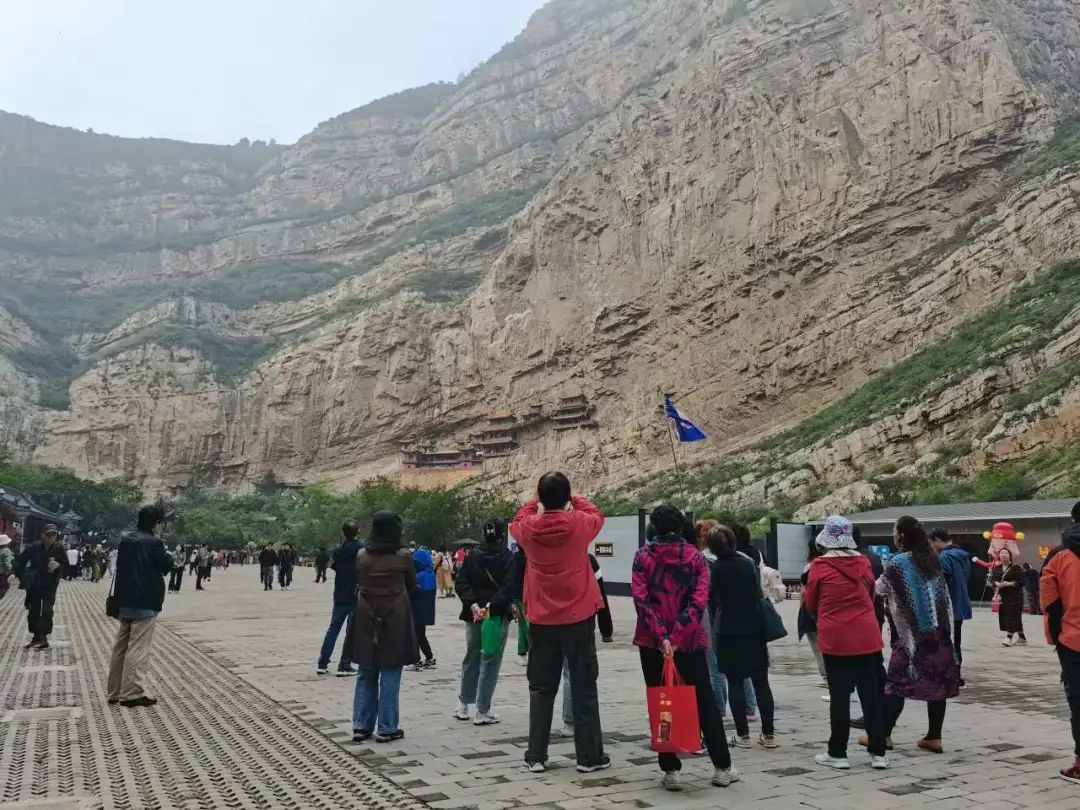
Proofread by: Xuefang
Edited by: Xuelin
Author's Introduction
Yu Ren, a native of Hunyuan, Shanxi Province, is a member of the Shanxi Writers Association. His poems, reportages, and articles on local history and culture have been published on platforms such as "Learning Power Nation," "Image," "Spark," "Hun Yuan Prefecture," and "North Mount History and Culture Research."
Keywords:
Related News
Republic of China hemp mat treasure | Guiyou (1933) Deng Hengyue Ji (with poems and texts)
In today's ancient city of Hunyuan, when discussing well-preserved ancient residences, one must mention the "Ma Family Courtyard." The original owner, Ma Xi Zhen, has also gained attention, as if the person is known because of their residence.
Republican High Liangzuo | 1935 North Shanxi Field Trip Notes
In the spring of 1935, the Nationalist Government in Nanjing dispatched Shao Yuanchong, a member of the Central Executive Committee of the Kuomintang, and Zhang Ji, a member of the Central Supervisory Committee, to Shaanxi to pay homage to the Yellow Emperor's Mausoleum. After the ceremony, Shao Yuanchong went on an inspection tour of Northwest China, visiting Gansu, Qinghai, Ningxia, Inner Mongolia, and Shanxi. His secretary, Gao Liangzuo, accompanied him throughout the journey, recording their observations and experiences, which were subsequently published in major newspapers and generated significant public attention.
Republic of China, Jiang Weiqiao | 1918 Hengshan Mountain photo album
In September 1918, Jiang Weiqiao, a councillor of the Ministry of Education of the Beiyang Government, was ordered by the Ministry of Education to inspect the academic affairs in Shanxi Province. He took the opportunity to pay his respects at Mount Wutai and Hengshan Mountain. He departed from Beijing on September 21, first taking a train to Shijiazhuang, and then to Taiyuan; then he took a carriage to Mount Wutai and Hengshan Mountain; and finally returned to Beijing from Datong by train on October 13.
Shao Yuanchong of the Republic of China | Brief Record of the 1935 Northern Mount Taihe Expedition
In the spring of 1935, the Nanjing Nationalist Government dispatched Shao Yuanchong, a member of the Central Executive Committee of the Kuomintang, and Zhang Ji, a member of the Central Supervisory Committee, to Shaanxi to pay homage to the Yellow Emperor's Mausoleum. After the ceremony, Shao Yuanchong went on an inspection tour of Northwest China, departing from Xi'an on April 25 and subsequently visiting Gansu, Qinghai, Ningxia, Inner Mongolia, and Shanxi.
Chen Xingya's Travelogue of Yungang Grottoes and Hengshan Mountain in 1935, Republic of China
Between the September 18th Incident and the Marco Polo Bridge Incident, Chen Xingya held the idle post of council member of the Peiping Pacification Commission, staying at home and often traveling with friends to various famous scenic spots in China.


